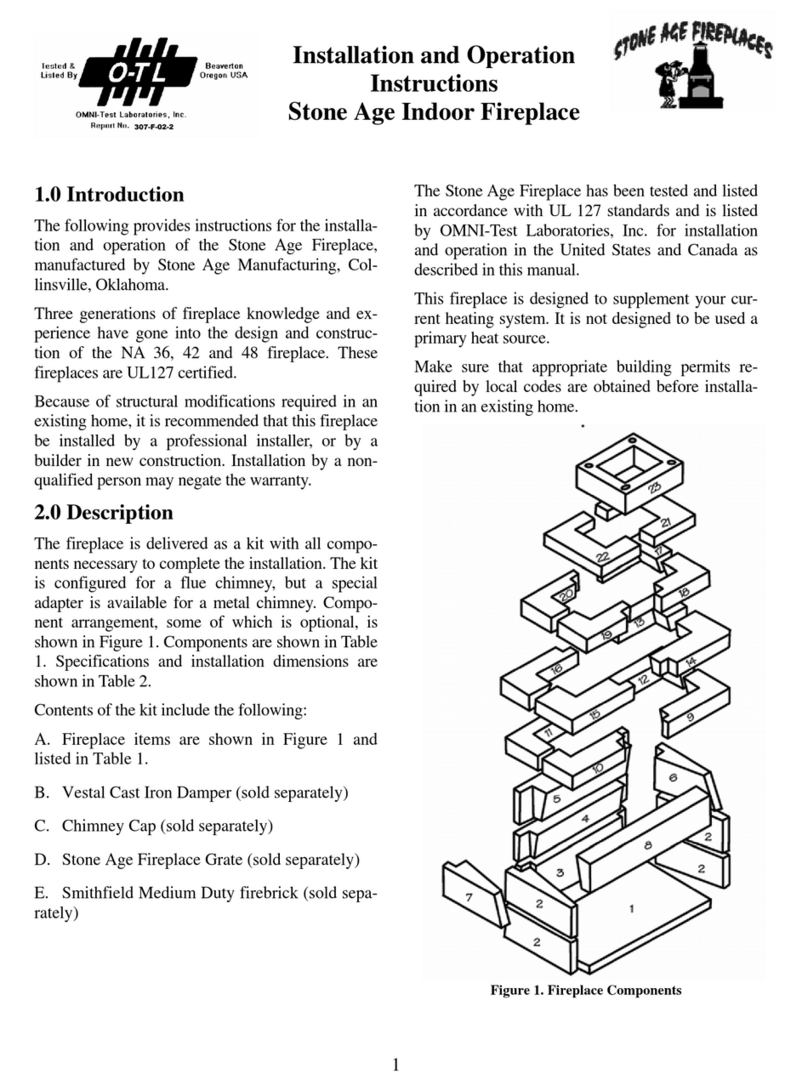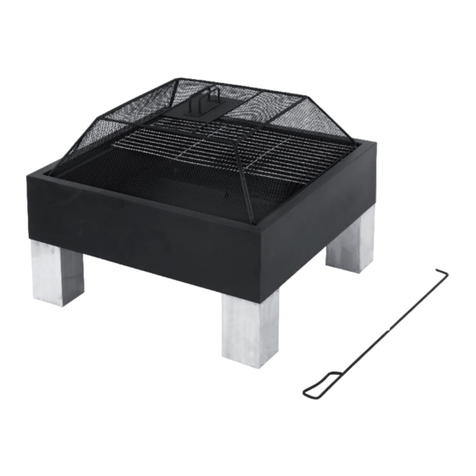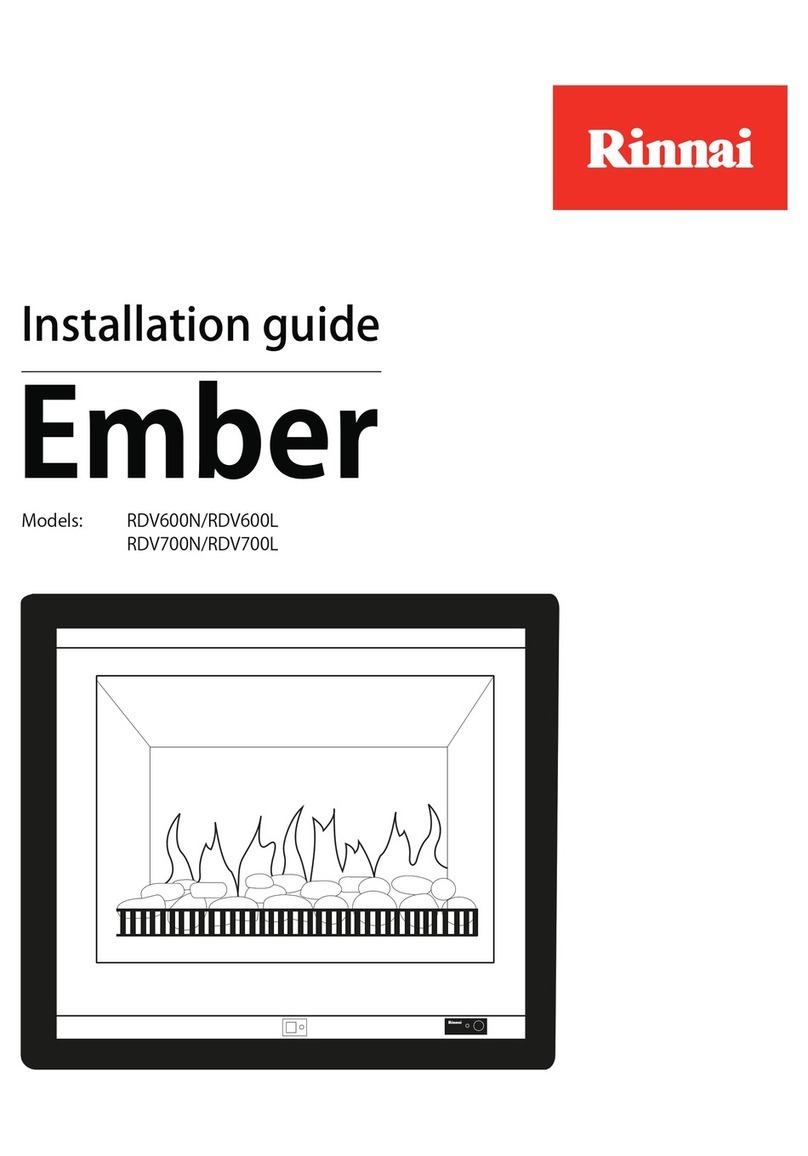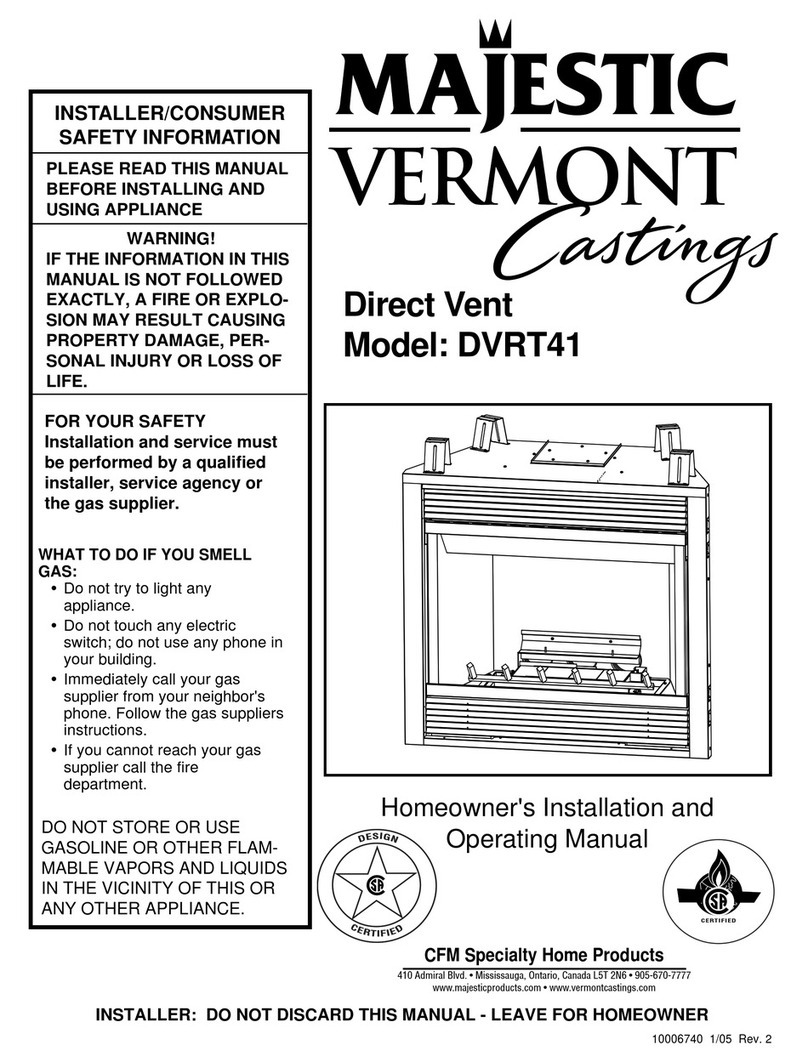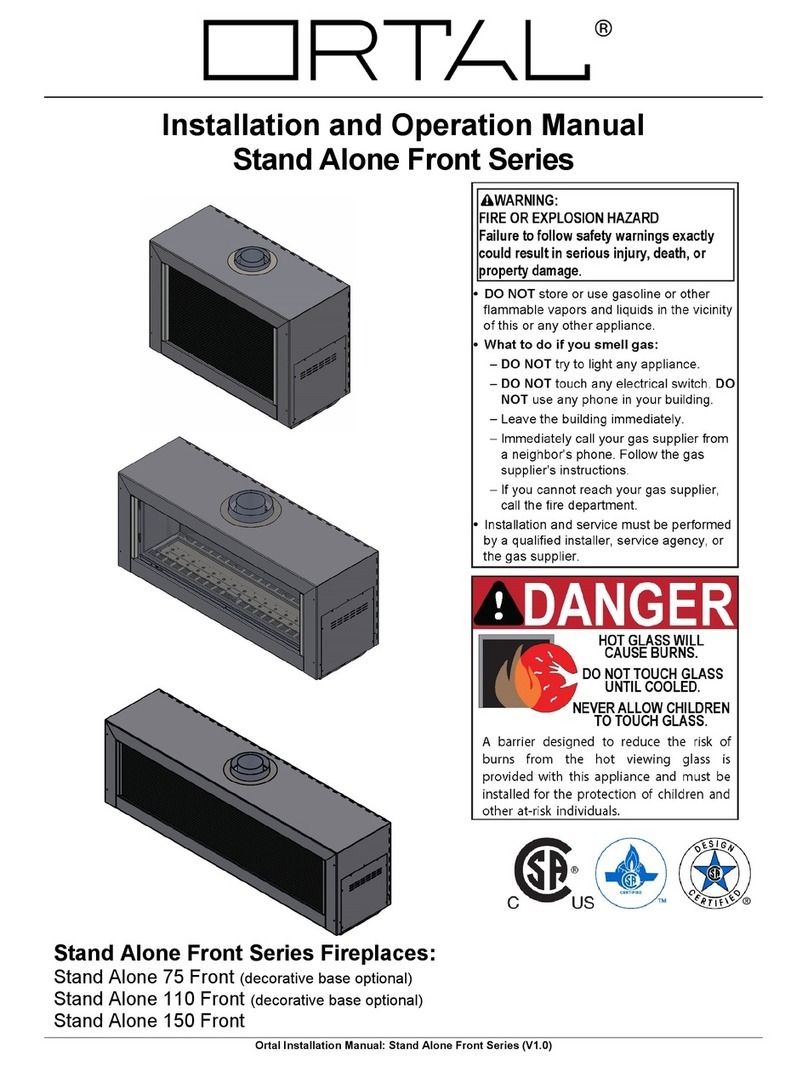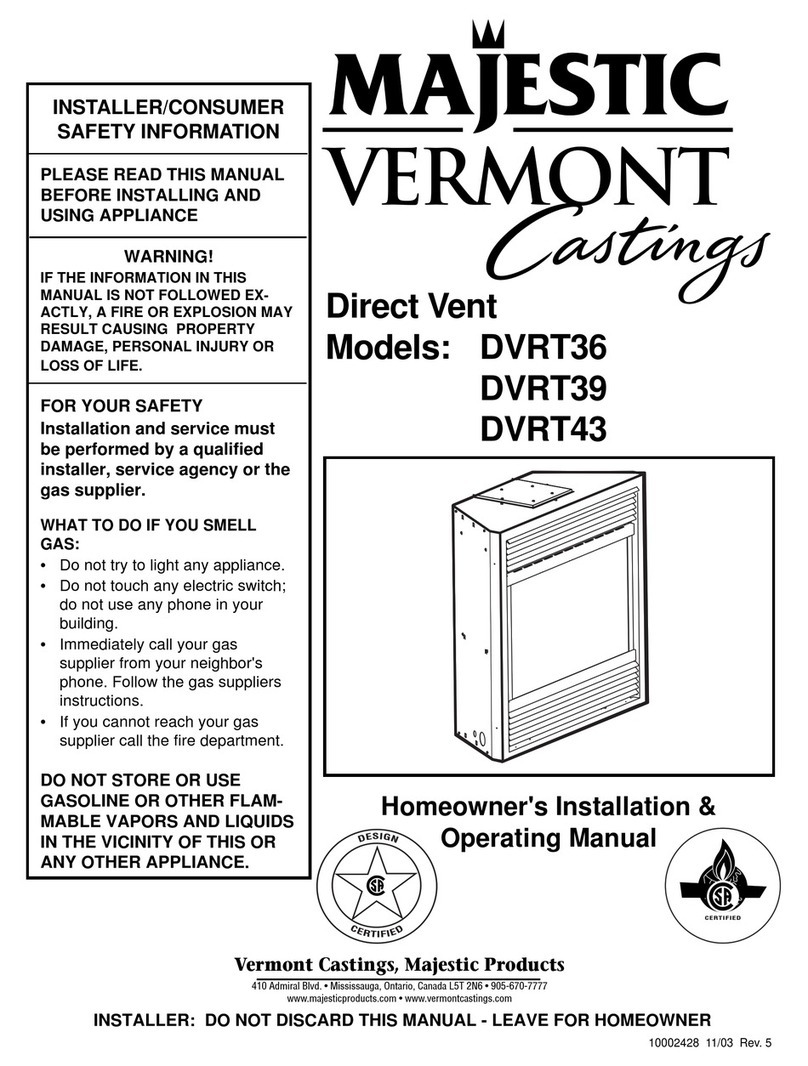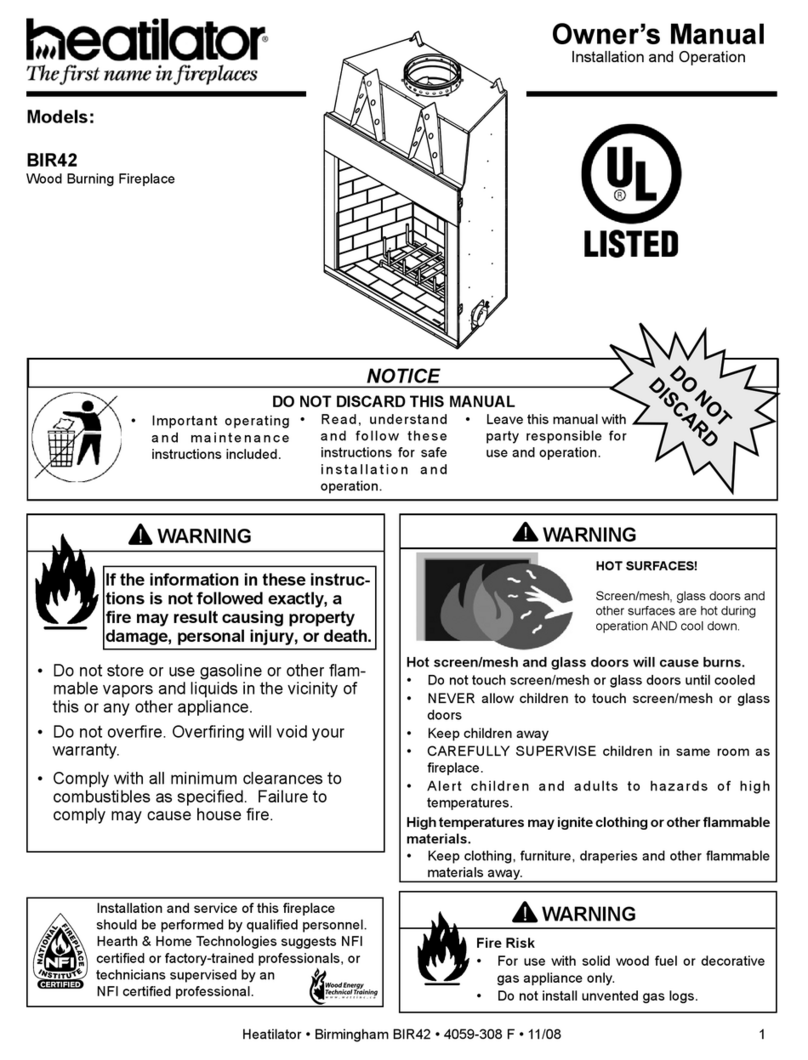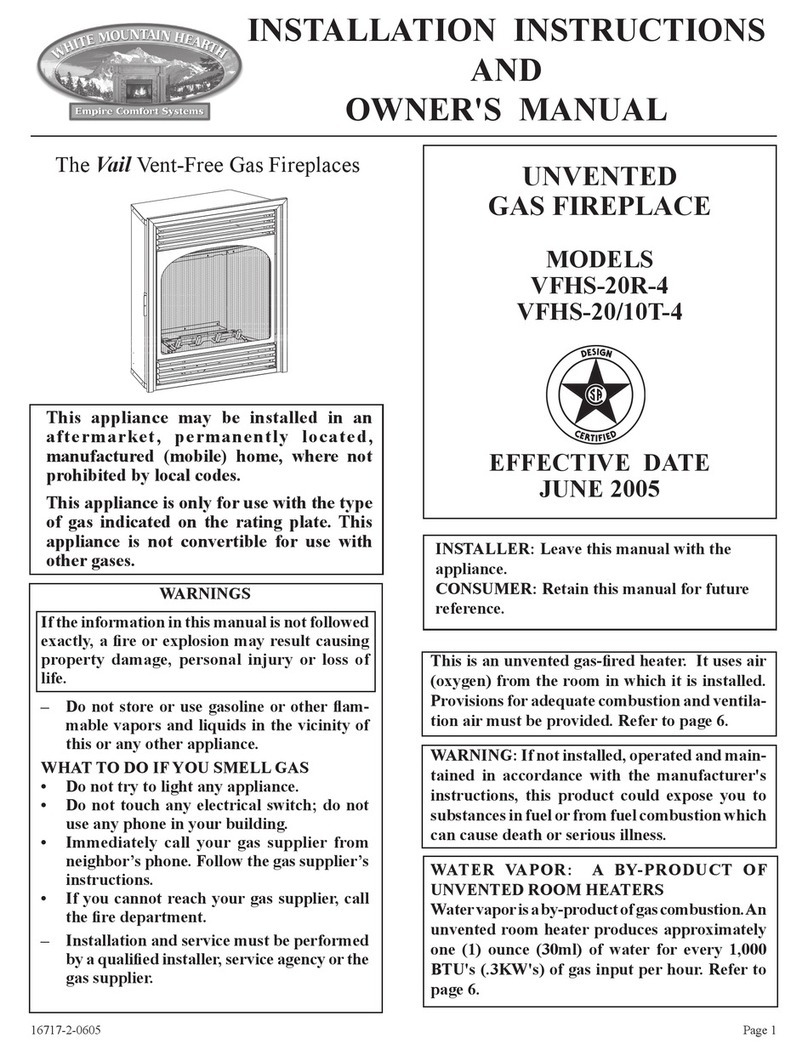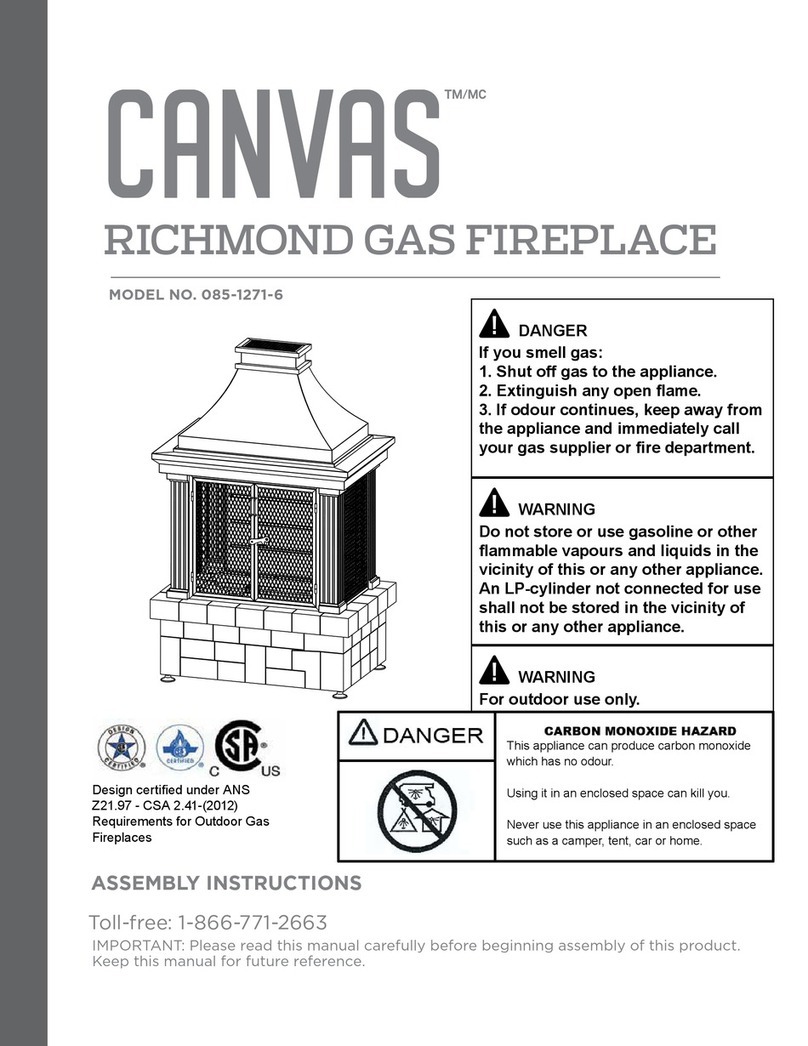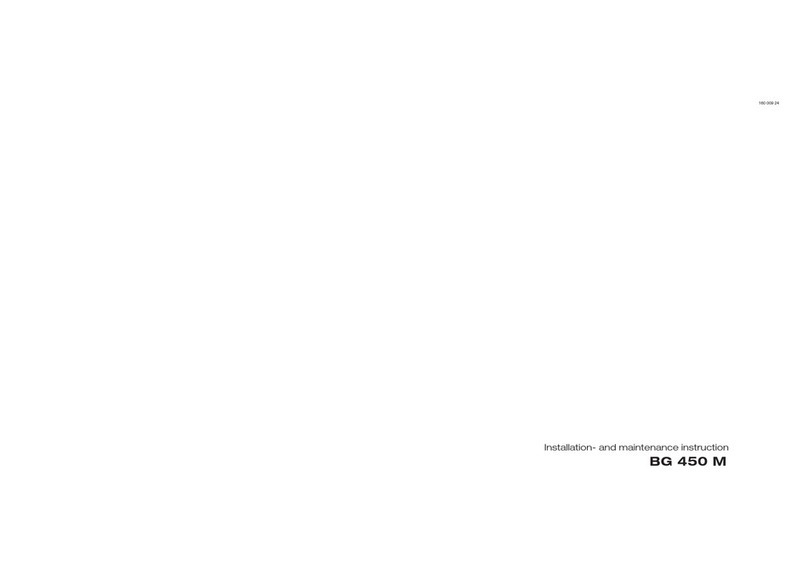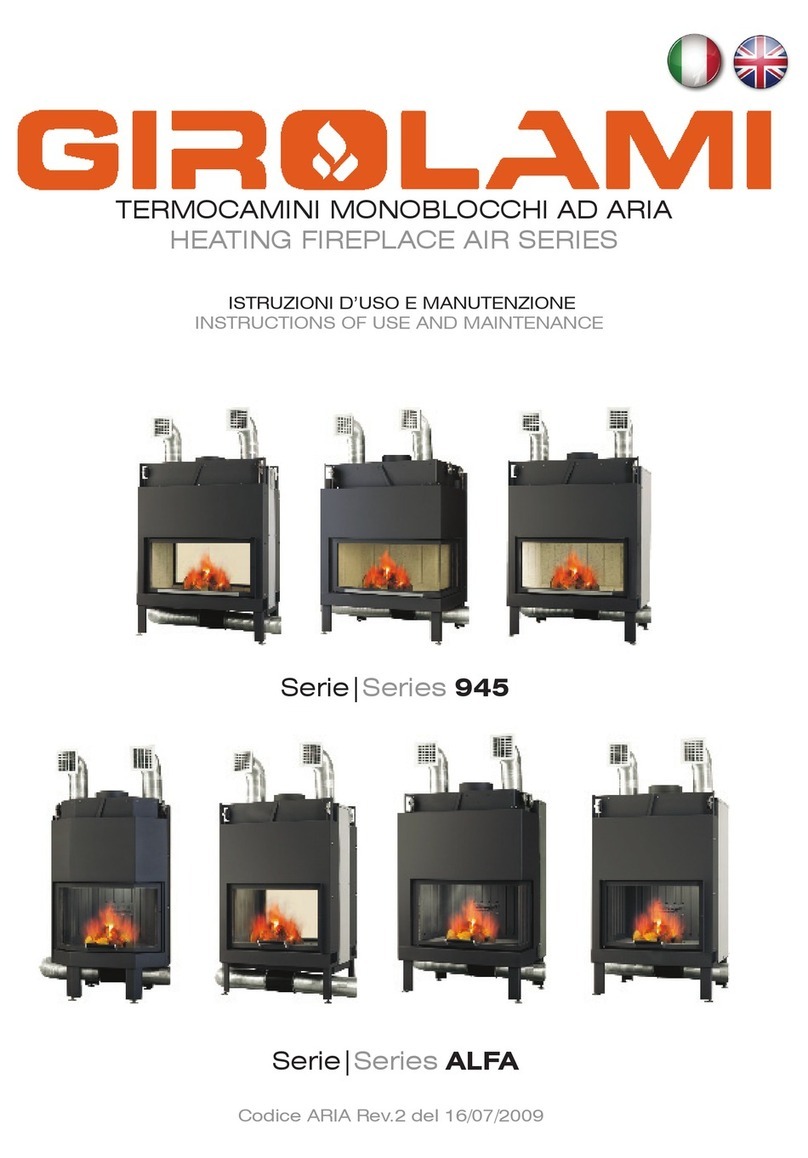Canne fumarie FATISCENTI, costruite con materiale non idoneo (fibrocemento, acciaio zincato, ecc. con su-
perficie interna ruvida e porosa) sono fuorilegge e pregiudicano il buon funzionamento del caminetto.
Un PERFETTO TIRAGGIO è dato soprattutto da una canna fumaria libera da ostacoli quali strozzature,
percorsi orizzontali, spigoli; eventuali spostamenti di asse dovranno avere un percorso inclinato con an-
golazione max di 45° rispetto alla verticale, meglio ancora se di soli 30°. Detti spostamenti vanno effettuati
preferibilmente in prossimità del comignolo. In ogni caso il TIRAGGIO minimo dovrà essere rispettato
onde evitare inconvenienti. Il TIRAGGIO MINIMO per la versione 25 è di 11Pa/0,11m/bar, per la versione 35
è di 12Pa/0,12m/bar. La verifica del tiraggio minimo deve essere effettuata con strumentazione idonea e
da personale specializzato.
Il RACCORDO FUMI tra focolare e canna fumaria dovrà avere la stessa sezione dell’uscita fumi del
MONOBLOCCO. Eventuali tratti orizzontali non dovranno superare i 2 metri e dovrà comunque esserci un
dislivello di 8/10cm per ogni metro, a salire in direzione della canna fumaria. Sono consentite al massimo
due curve a 45°.
Il COMIGNOLO deve essere del tipo ANTIVENTO con sezione interna equivalente a quella della canna
fumaria e sezione di passaggio dei fumi in uscita almeno DOPPIA di quella interna della canna fumaria.
Per evitare inconvenienti nel tiraggio, ogni caminetto dovrà avere una propria canna fumaria indipendente
(evitare collegamenti tipo fig 1). Nel caso di presenza di più canne fumarie sul tetto è opportuno che le
altre si trovino ad almeno 2 metri di distanza e che il comignolo del caminetto SOVRASTI gli altri di almeno
40cm (fig. 2). Se i comignoli risultano accostati prevedere dei setti divisori.
Ricordiamo che è necessario efettuare pulizie periodiche della canna fumaria, al fine di evitare il rischio
di incendi della stessa e per ottenere un funzionamento ottimale del camino. Per effettuare la pulizia in
maniera corretta è bene predisporre sulla canna fumaria in prossimità del camino una botola di ispezi-
one per il recupero dello sporco. Di seguito un esempio di botola di ispezione. La botola di ispezione se
posizionata come da immagine potrà essere utilizzata anche per effettuar regolazioni della valvola fumi.
Figura 1
It is advisable to use flues insulated with a refractory material or in stainless steel with a circular cross sec-
tion and smooth inner walls. We recommend a minimum height of 3.5/4m (see technical specifications).
Under the outlet of the smoke pipe there should be a collection chamber for solid materials and any con-
densation. Flue characteristics must comply with UNI 9615, 9731 and UNI 10683.
During installation, make sure the type of flue used is blocked at the sealing ring located on the chimney
smoke output. If it should stop below that ring it will cause the blockage of the smoke regulation valve with
subsequent emission of harmful gas in the room where the fireplace is located.
DETERIORATING flues made of unsuitable materials (asbestos, galvanised steel, etc, with rough and po-
rous inner surfaces) are illegal and can jeopardise proper stove operation.
• A PERFECT DRAUGHT is above all the result of a flue that is free of obstructions such as obstruc-
tions, horizontal sections or corners. Any axial displacements should be a a maximum angle of 45° com-
pared to the vertical axis and are better still at 30°. These displacements should preferably be performed
near the chimneypot. In any case, the minimum DRAUGHT must be respected in order to avoid prob-
lems. The MINIMUM DRAUGHT for version 25 is 11Pa/0.1m/bar and for version 35 is 12Pa/0.12m/bar.
The minimum draught check must be performed with suitable instruments by skilled personnel.
• The SMOKE FITTING between the furnace and flue must have the same section as the smoke output
from the UNIT. Any horizontal sections must not be more than 2 metres long and must have a drop of
8/10 cm every metre, rising in the direction of the flue. A maximum of two 45° angles are allowed.
• The CHIMNEYPOT must be the WINDPROOF type with an inner cross section equal to that of the
flue and with a smoke output passage at least DOUBLE the internal one of the flue. To avoid draught
problems, each fireplace should have its own flue (avoid connections such as the one shown in fig. 1).
If there is more than one flue on the roof, they should be at least 2 metres apart and the chimneypot on
the fireplace should be at lease 40 cm ABOVE the others (fig. 2). If the chimneypots are near each other,
install some separators.
• Remember that the flue must be periodically cleaned in order to prevent a risk of fire and for optimal
fireplace operation. To correctly clean, an inspection door should be placed on the flue near the chimney
to recover the soil. The following is an example of an inspection door. If positioned as shown in the im-
age, the inspection door can also be used to regulate the smoke valve.




















